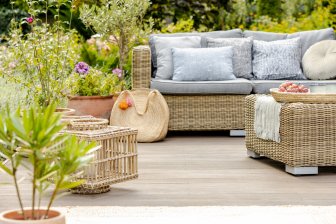TORONTO – What’s growing in your flower bed, might also go well with your salad.

Edible flowers aren’t all that common at Canadian dinner tables these days, but there was a time when they were.
It seems we may have lost our taste for florals around the time we lost our knowledge of plants, according to the executive director of the Toronto Botanical Garden, Harry Jongerden.
Education is at the top of the list at the Toronto Botanical Garden.
“Let’s just say we’re trying to bring back an old tradition,” says Jongerden, as he takes a bite out of the dark pink petal of a shrub rose, uttering an appreciative “mmmm” as the flavour of the flower settles in.
“Funny thing with roses is that the darker the colour, the tastier the petal.”
The colour factor isn’t necessarily true when it comes to the taste of other edible flowers.
Pansies are popular as well and Christine Thompson, of Jaycee Herbs, said they are the most common of the florals the company imports from around the world.
“Consumers are most familiar with them – they see them at events, weddings, caterers often use them too,” she said.
The edible floral imports are only a very small portion of the business. Thompson estimates it makes up close to five per cent but the niche is growing. Some of Jaycee’s products are sold in large Canadian grocery stores under house brands and some under their own label.
She points to a small sealed package of bright purple, yellow and white pansies.
“We eat with our eyes, right?” Thompson said.
But we eat out of habit too, says Mike Cowbrough, a weed specialist with the Ontario ministry of Agriculture and Food.
“If we look at our landscape, we have narrowed it down to things we are used to,” Cowbrough said.
Michelle Arsenault, a student of Cowbrough’s at the University of Guelph, wrote a cook book using common weeds as ingredients.
“The book is a great way to show people to use what we have,” said Arsenault. The masters student co-authored a book called The Good Season with Michelle Carkner. The book features recipes using seven common weeds including dandelions and lamb’s quarters.
“It’s a way to be really resourceful, just use what you have around you,” she said.
One of the recipes is a soup made with dandelion leaves. Another is an artichoke dip made with the Lamb’s Quarters which Arsenault says has a mild taste, similar to spinach.
- B.C. to ban drug use in all public places in major overhaul of decriminalization
- Posters promoting ‘Steal From Loblaws Day’ are circulating. How did we get here?
- 3 women diagnosed with HIV after ‘vampire facials’ at unlicensed U.S. spa
- Canadian food banks are on the brink: ‘This is not a sustainable situation’
“The wild plants are actually very nutritious too,” she said.
As are some flowers, says Jongerden.
Jongerden recommends sipping tea made from rose hips.
When it comes to picking those precious petals, Jongerden has some advice.
“I would suggest eating flowers off plants you have grown,” he said, noting you will know whether pesticides were used.
Most popular flowers to eat, according to the Toronto Botanical Gardens:
Basil
Calendula
Carnation
Geranium
Lavender
Pansy
Rose Petals
Viola
Zucchini Flowers





Comments